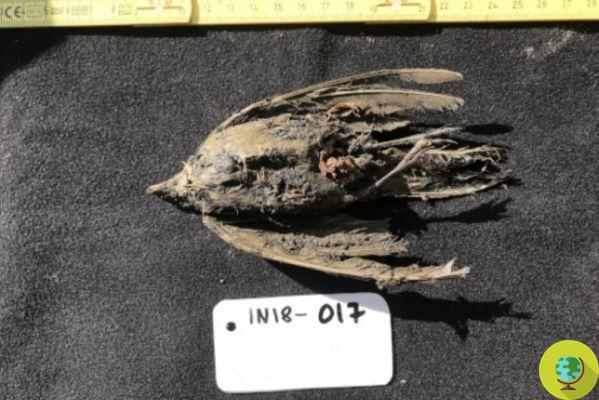
46000 years and not feeling them thanks to the Siberian ice: the ancestor of the lark has been found in north-eastern Siberia
He is about to end up run over, his mother saves him46000 years and not feel them thanks to the Siberian ice: a prehistoric bird dating back to the Pleistocene was found in the Russian village Belaya Gora, in north-eastern Siberia. A research group from the University of Stockholm, in collaboration with the Swedish Museum of Natural History, has shown that the specimen, a female, is a horned lark, ancestor of today's species.
During the last ice age it spread to northern Europe and Asia there mammoth steppe, characterized by a cold and dry climate. The steppe was home to extinct species such as the woolly mammoth, ancestor of the elephant that lived between 200.000 and 5.000 years ago, and the woolly rhinoceros, which lived between 3,6 million and 10.000 years ago.
According to one theory, this ecosystem was a mosaic of habitats such as steppe, tundra and coniferous forest. At the end of the last ice age, the mammoth steppe was divided into the biotopes we know today: the tundra in the north, the taiga in the center, and the steppe in the south.
The discovery therefore has an importance that goes far beyond scientific curiosity, because it will help to understand how the subspecies evolved starting from common ancestors. Indeed, the diversification of the horned lark, scientists report, appears to have occurred simultaneously with the disappearance of the mammoth steppe.
"Not only can we identify the bird as a horned lark - explains Nicolas Dussex, first author of the work - The genetic analysis also suggests that the bird belonged to a population that was a common ancestor of two subspecies of horned lark living today, one in Siberia and one in the steppe in Mongolia. This will help us understand how subspecies diversity evolves ”.
In the short term, the researchers' ambition is to map the complete genome of the 46000-year-old lark and then compare it with the genomes of all subspecies of horned larks.
The researchers have access to numerous samples from the same site in Siberia, including an 18000-year-old puppy called Dogor that the researchers are studying to determine whether it is a wolf or a dog. Other finds include a 50.000-year-old cave lion cub, Spartak, and a partially preserved woolly mammoth.
At the end of this phase it will perhaps be possible to trace a evolutionary profile with hypotheses, who knows, also about the future.
The research was published in Communications Biology.
Read also:
- The first blue color in history found in a fossil of a prehistoric bird
- Chick fossil discovered, sheds light on bird evolution
Sources of reference: Stockholm University / Communication Biology


























